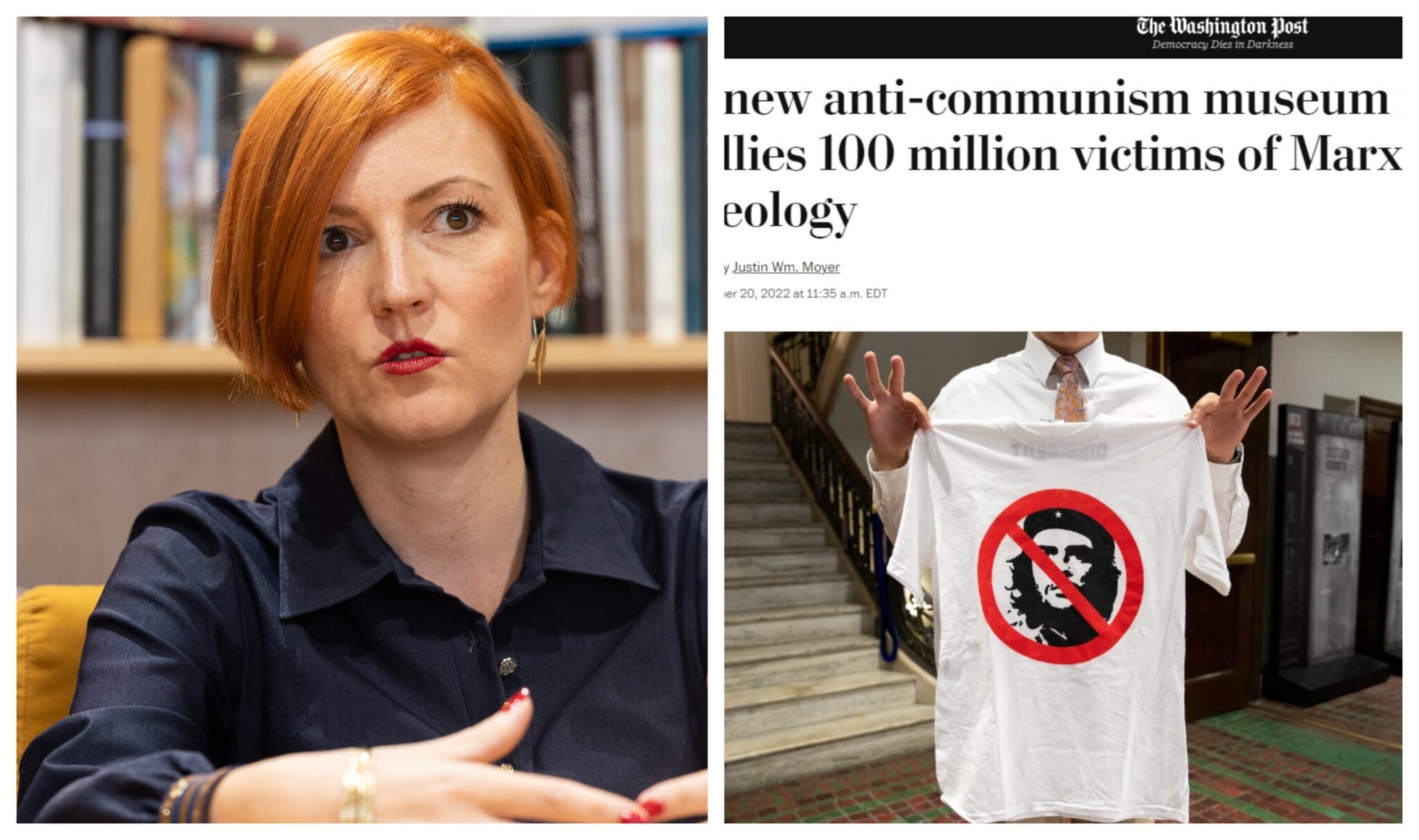By: Sara Kovač / Nova24tv.si
Since the Slovenian Minister of Culture Asta Vrečko from the ranks of the Levica party is a political activist, it is not surprising that she announced the closing of the Museum of Slovenian Independence. With this, Levica contributes its mosaic to the destruction of the memory of everything that reminds of Slovenian independence, and Slovenia, by closing the museum, becomes the only country in the world that commemorates its creation. Elsewhere in the world, the picture is completely different, as museums are not being closed, but are even being opened. In Washington, for example, a museum dedicated to the victims of communism opened its doors.
The Anti-Communist Museum in Washington has found its home in an office building once owned by the anti-communist United Mine Workers of America. It is run by the Victims of Communism Memorial Foundation, established on the basis of legislation signed in 1993 by then-President Bill Clinton. Funded by donations, the museum mainly depicts the horrors of communism in the 20th century. It accurately represents the development of communism from Karl Marx to Soviet Russia and elsewhere in the world. The museum estimates that communist regimes are responsible for more than 100 million deaths worldwide, including executions and starvation.
In the new museum, it is possible to see the works of the Ukrainian painter Nikolai Getman, who turned the years of the Siberian gulag into art. According to the Washington Post, the interactive display allows visitors to choose for themselves what they would do if faced with the persecution of Fidel Castro and other dictators. In the photo gallery of survivors who witnessed the horrors of communism, you can find, among others, Pope John Paul II. and the Dalai Lama. While elsewhere you can usually buy t-shirts with the motif of the Cuban revolutionary “hero” Che Guevara, here it is different. The image of the shirts with Che Guevara has been crossed out. Of course, this is not surprising, as it is known that Che Guevara was in favour of killing all those who opposed the revolution (unwanted were homosexuals, members of various Christian churches, dissident writers, journalists, and others who posed a danger to communism).
On the second floor of the museum, you can see images from the Tiananmen Square protest in China in 1989, which ended with the murder of hundreds, if not thousands, of pro-democracy dissidents. The collection includes, among other things, the bloodied shirt of a journalist who was beaten by soldiers and the iconic blue tent of the protesters. The President of the Victims of Communism Memorial Foundation, Andrew Bremberg, sees the possibility of the museum becoming a centre of learning, like the American Holocaust Memorial Museum. The museum reveals documents detailing the repressive tactics of the Chinese police. Bremberg points out that young people are insufficiently aware of the dangers of communism due to the misguided predictions that this ideology had no future after the collapse of the Soviet Union. According to him, in light of the rise of left-wing regimes in Latin America, the threat is returning. “It is a big challenge that is back. The entire country must be more aware of the dangers and evils of communism,” he emphasised.
Opposition to human rights abuses by communist regimes has historically crossed party lines in the United States. The Congressional Caucus of Victims of Communism was founded by two Democrats and two Republicans. Politicians from both parties, however, may find themselves on the same page on many contemporary issues related to the museum – such as the Chinese government’s treatment of the country’s Muslim Uyghur minority. As we know, it is unfortunately different in our country, because the Slovenian left is simply not capable of condemning the horrors of the communist regime. In particular, the coalition party Levica, to which the current Slovenian Minister of Culture belongs, wants to destroy the memory of our country’s independence in every possible way, as it represented a true nightmare for lovers of the former socialist country. The Museum of Slovenian Independence is undoubtedly not an ideological project, as the rulers want to portray it. The gaining of independence is a unique and unprecedented fact of Slovenian history, which deserves an independent museum title, rather than existing only as a subsection of some other institution.
